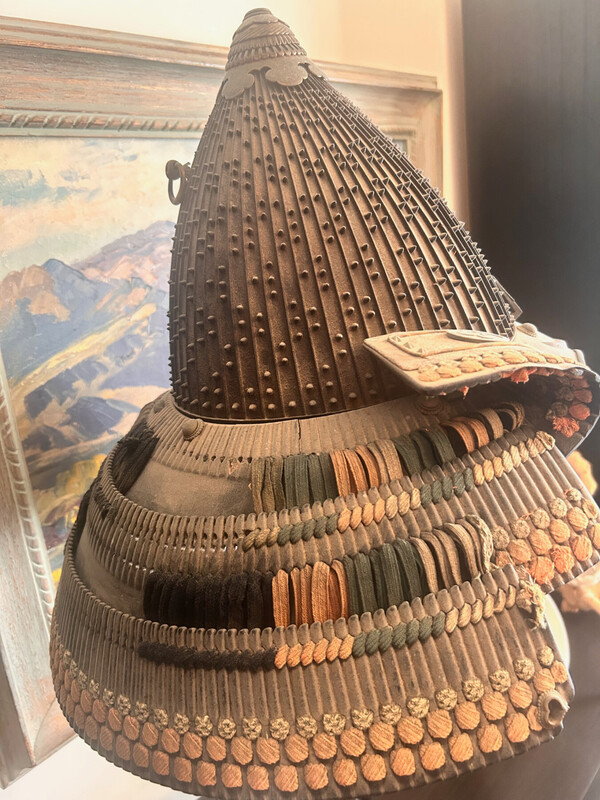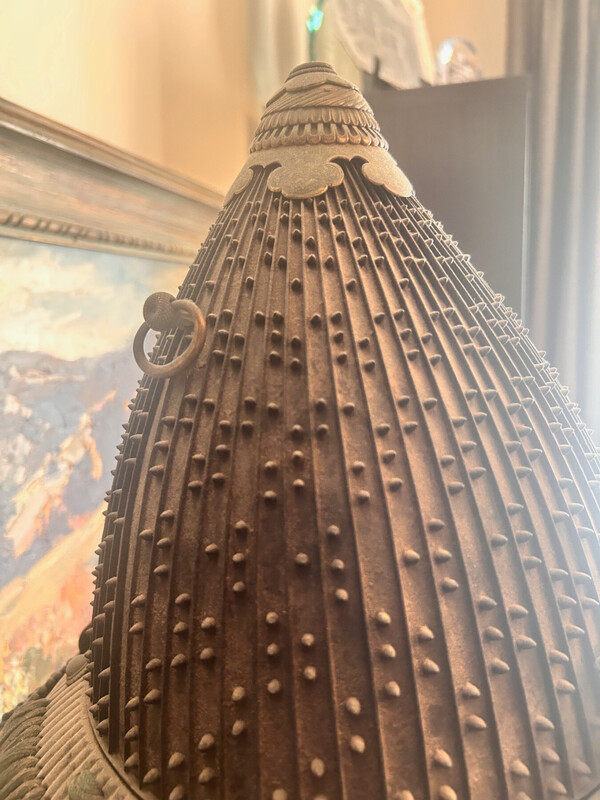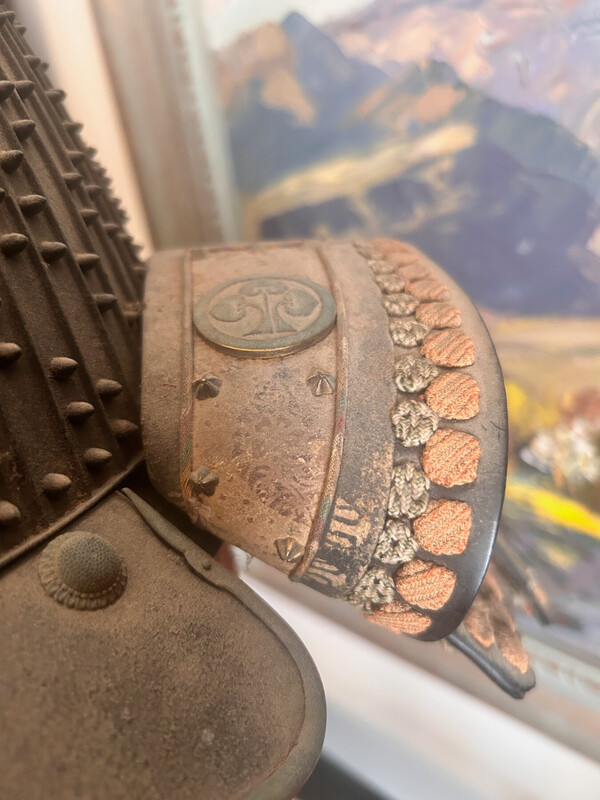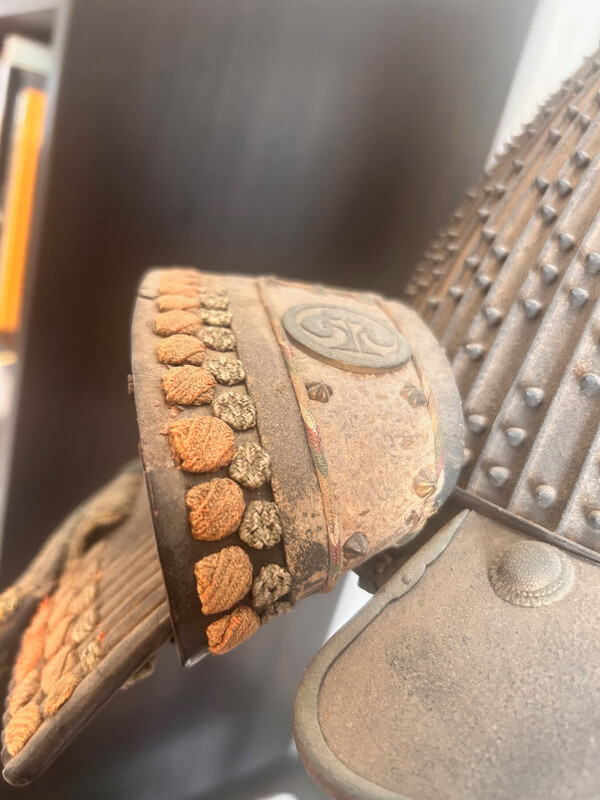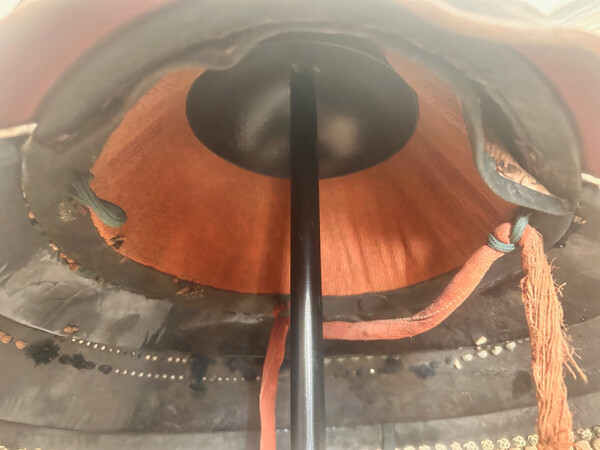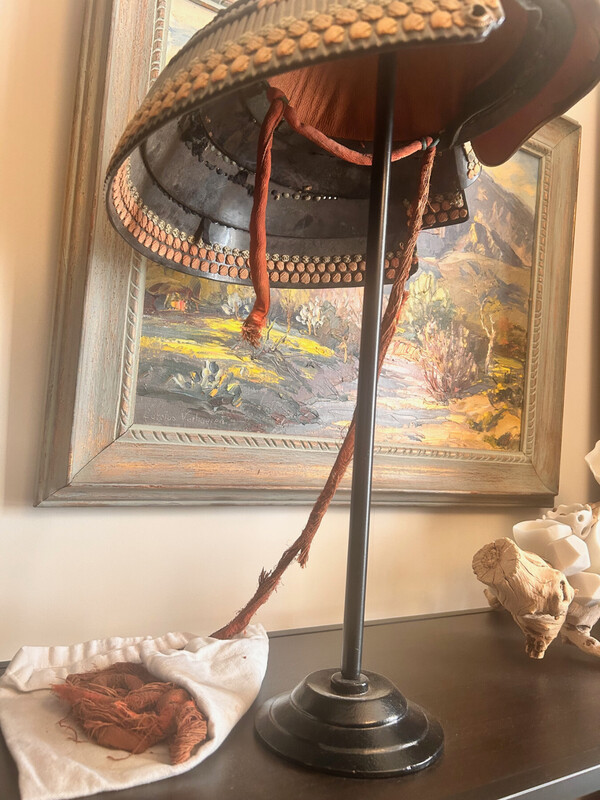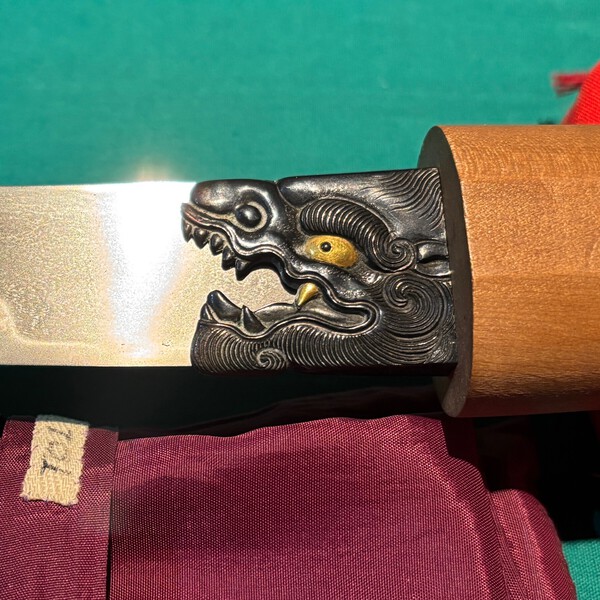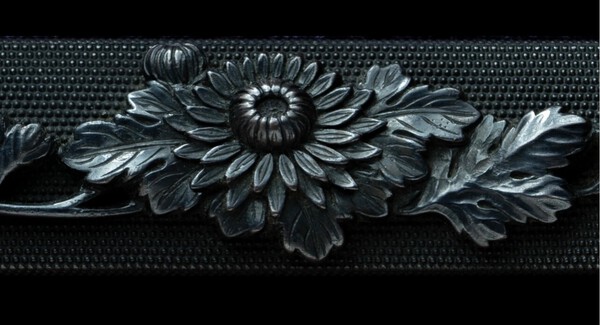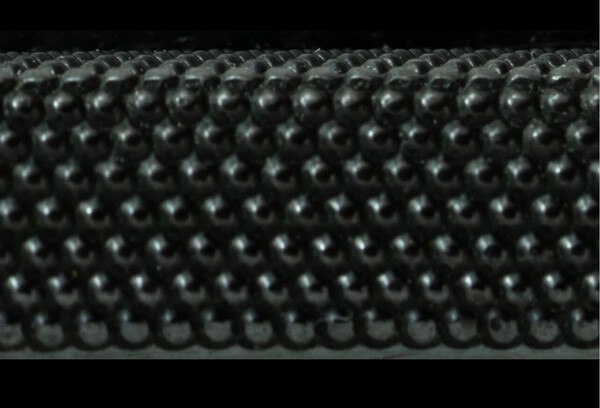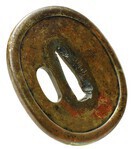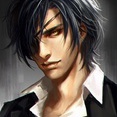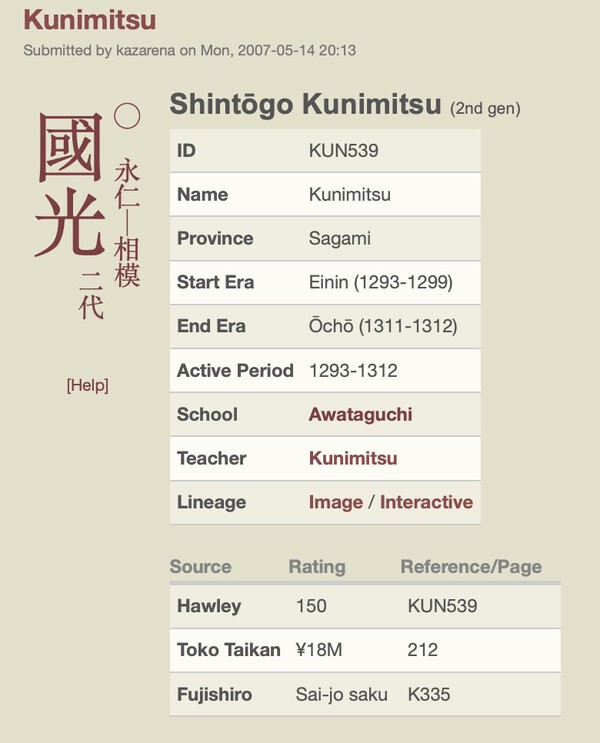All Activity
- Past hour
-
lkytal joined the community
-
Azzie b joined the community
- Today
-
I am not well versed in all the relevant terminology or history, but I can try to describe certain elements based on the knowledge I have tried to gain online and will make an attempt to use some terms, hopefully correctly. And hope I have provided some images that are useful. I am grateful for any additions and corrections and would be interested in insights from your knowledge, history, experience or enthusiasm so I can better appreciate it and create a good description for my friend. I don't know if he has interest in restoring it, selling/donating it. 1. This suji bowl shape (hachi) is shiinari ("acorn") or toppai ("pointed") 2. 62 plates form the bowl that are 3. Standing rivets. They are in groups of 1, 2 and 3. 4. The opening on the top (tehen) is fitted with a tehen kanamono that seems to have 7 layers or pieces culminating in a solid (closed) top piece. 5. The plate at the center, back of the hachi has a ring (Kasa jirushi no kan ?) 6. The fukigaeshi seem to have some interesting patterned material under the layers of dust/dirt, with star or rosette shaped rivets or studs and a kamon on each side with Tachi Aoi (standing hollyhock)(?). Does this symbol represent a specific lineage or family crest? 7. The multi-lame skirt (shikoro) has three metal lames attached by multi-colored lacing (maybe a third of it missing)and with interesting "heart-shaped" metal pieces in outer corners of lower lame [wow, restoring lacing does look like it would be a challenging endeavor] 8. The helmet liner (Ukebari) is intact and chin cord (shinobi-no-o) is attached but degraded. 9. The visor (Mabizashi) is dented which has caused some cracking of the red laquer (paint) on the visor underside. Is there any reason to look for a signature or other markings and, if so, where or how? I think beyond a description like something above, he would be interested to know a general age or time period for the helmet and anything that might get him interested in doing something with it. Hate to see this just put back into a box for years and then likely to be found by someone who might then have very little interest in it. A lot of fine craftsmanship and beauty in this and even more so in the really fine examples I have seem during my internet explorations. Thanks for any input -- much appreciated, azzie b.
-
- 1
-

-
hi @Toki , welcome, nice to see more people from germany joining
-
Thank you @Sebuh! There is truly a lot to be learned :D
-
Welcome @Toki we’re glad to have you, here’s to a lifelong journey.
-
Toki changed their profile photo
-
Hello everyone, My name is Erik, over the past few months I have gained an interest in Nihonto, mainly thanks to my practice of Japanese swordsmanship. I have been lurking around here the past few months and finally decided to make an account as well. My interests are history, antique and modern military equipment, martial arts and photography. While I like all periods of Japanese history, my main interest lies in the Kamakura period and the late Muromachi period. My collection is yet to arrive and will consist of a mumei wakizashi from the Tensho era, though it has been attributed to a smith by the NTHK-NPO. I´ll be picking it up in Japan this summer. While its certainly not a masterpiece, I still really enjoy it and am looking to learn more about it. Since I am new to the world of nihonto, please feel free to correct my mistakes whenever you see them, i dont bite
- Yesterday
-
-
Hi! Here are some high resolution pictures of, IMHO, excellent nanakoji. The chrysanthemum kozuka is papered TH. Mito Yoshinari was a pupil to Isigurou Masatsune. well carved motif with lovely regularity in the nanako technique. Enjoy! Anthony
-
-
Thank you for this amazing contribution Jussi!
-
Toryu2020 started following Japanese Old Sword Database
-
Terrific work - thank you
-
There's actually one on eBay, but it has some flaws. He must have it, since he took more pictures at my request. Then I'll just check if I throw a bottle into the sea and see if it'll come back or not. Then, koshirae or shirasaya. I already have a wakizashi in shirasaya from the Kanabo school, so shirasaya is fine too. Paper, yes, but we'll see. Then, yes, customs can be more or less harsh, but I'm not closed off from the world; Europe would indeed be nice.
-
-
-
-
-
-
Japanese prewar wakizashi 脇差 tourist piece with carved bone handle? Japanese short sword - GI tourist bringback, art piece, or something else? Japanese short sword (tourist piece?) - additional photos A postwar Japanese garden knife. Unusual Japanese bayonet Kōkoku 興国 wooden training rifle and bayonet. Rifle: Kokoku Wooden Trainer Bayonet: Japanese wood school bayonet
-
Let me quote from Markus Sesko’s book on Masamune: “When it comes to dated works by Kunimitsu we are talking about a time from the first year of Einin (永仁, 1293) to the fourth year of Genkō (元享, 1324). The Kotō Mei Zukushi Taizen (古刀銘尽大全) quotes Kunimitsu´s year of birth as Kenchō two (建長, 1250) and his year of death as Shōwa one (正和, 1312), which does not match with his known dated signatures. Well, the information from the Kotō Mei Zukushi Taizen, especially the dates, must be taken with a grain of salt because it gives for each and every smith his year of birth and death. Such a comprehensive data was not known in earlier times and it is odd that the creator of this work suddenly “knew” all this at the time the publication was published for the first time, in the fourth year of Kansei (寛政, 1792).” I think it eloquently describes why the veracity of that source is dubious. And when it comes to Stan’s database, I do not think he has updated it recently. I believe that knowledge and understanding have moved substantially in the last 10-15 years since the database was put together. That is completely normal, as new blades emerge (well at least new / unknown to us) and the NBTHK keeps documenting new examples.
-
Kiipu started following Cross-Reference to GBF Threads
-
A Kris with Japanese katakana? Help ID this knife A Japanese machete. GBF: Japanese machete question NMB: Japanese machete question Postwar Kiffe made copy of an American bayonet. Kiffe Japan questions
-
Another feature of the kuni kanji that's different to the Masters is the horizontal strike above the mirrored S. I've seen it several times on published Kunihiro Mei but not Shintogo's. I think I can make out a similar strike on my blade.
-
Don't go ebay men. As I suppose you are looking for a koto pappered katana in koshirae at best located in europe? Simply state that here and peps would message you with offers. Ebay taking a cut so prices on ebay are usually higher then market. Also eu customs would take some percentage extra If you import to europe.
-
Ok Im going to call it as imitation to avoid any misunderstanding
-
Some very useful points of reference. According the the Nihonto Club Kunimitsu was active 1293-1312. It's interesting that Tanobe gives a longer active life for Shintogo on the basis of the quality of a particular blade ie the 1320 tanto. From the Koto Meizukushi Taizan. Shintogo is said to have been born in 1250 and according to this reference dies in his 63rd year, ie 1313. Question is, which source is the most reliable. Dating works from this period are notoriously difficult with many contradictions even within the old texts. Given photos are even less useful for observing certain features compared to oshigata, this tanto dated 1324 shows many of the signature Shintogo features, such as extensive chikei, fine kinsuji and yakikomi. Signed Shintogo Kunihiro. https://emuseum.nich.go.jp/detail?langId=en&webView=&content_base_id=100486&content_part_id=0&content_pict_id=0 The 1318 Kunihiro signed tanto also has yakikomi. Beyond that the poor quality B&W image gives up little to be able to pass judgement on the jiba. What doesn't make sense is why Kunihiro would be signing in his own right if his father was still alive and working.
-
Here is an automated translation of setsumei Tanto from session 69 Important Sword Designation No. 69, Measurements Nagasa: 25.8 cm, Sori: Uchi-zori, Motohaba: 2.3 cm, Nakago length: 10.9 cm, Nakago sori: Almost none. Shape Sugata: Hira-zukuri, Mitsu-mune, Mihaba is standard, Kasane is moderate, Features uchi-zori. Forging (Kitae) Kitae: Itame hada with some nagare, Ji-nie is well-developed, Chikei appears prominently, Bo-utsuri is visible, The steel is tightly forged. Hamon Hamon: Chu-suguha with ko-ashi, Slight kinsuji present, Nioiguchi is bright. Boshi Bōshi: Straight, turning slightly in ko-maru style with hakikake. Horimono Horimono: Omote: Plain ken (straight groove), Ura: Suken carved in flowing style. Nakago Nakago: Ubu, Kurijiri, Yasurime: Katte-sagari, Mekugi-ana: One, Omote: Two-character mei (signature) centered below the mekugi-ana, Ura: Dated inscription. Explanation Shintōgo Kunimitsu is effectively the founder of the Soshu tradition and is renowned for training three legendary swordsmiths: Yukimitsu, Masamune, and Norishige. His work, while reminiscent of the Awataguchi style at first glance, is distinguished by prominent chikei and kinsuji in the ji and ha. He excelled in suguha variations (ito, hosu, chu, hiro) and is considered one of the two greatest masters of tanto alongside Fujishiro Yoshimitsu. This hira-zukuri tanto exhibits typical late Kamakura-period traits, including standard mihaba, moderate dimensions, and uchi-zori. The itame hada mixed with nagare, along with pronounced ji-nie and chikei, showcases Kunimitsu’s characteristic workmanship. The chu-suguha hamon with a bright nioiguchi and slightly hakikake boshi further confirm this attribution. The blade’s strong, well-forged steel and the presence of a dated inscription on the nakago make it exceptionally valuable for historical study. This piece is recorded in the Kōzan Oshigata.
-
And as of today this: https://www.bbc.com/news/articles/cd0vkl31085o And this adds to the confusion: In an article last updated in May 2024, the U.S. Customs and Border Protection outlined antiques, specifically proven to be 100 years old or older, are classified under Chapter 9706 in the Harmonized Tariff Schedule (HTS), which means they are “duty-free, provided the importer has proof of the goods age (i.e. the year of manufacture).” However, Brockway points out there are a lot of factors to consider when bringing in antiques and vintage furnishings, and dealers and customers should always be prepared to pay additional costs. So I'm guessing no tariffs then?


